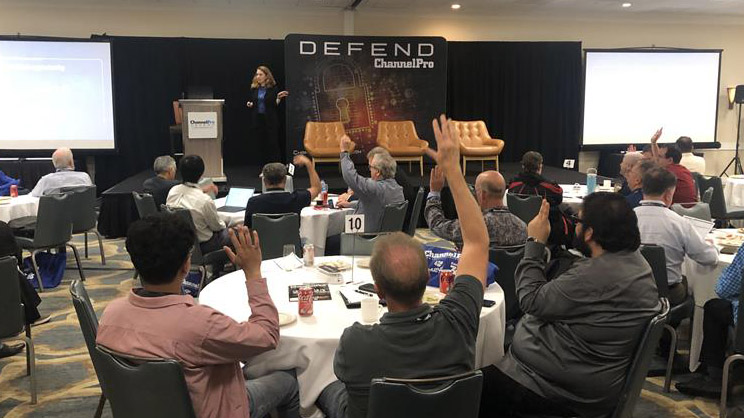The following is an edited excerpt from the book Process and the Other “P” Word (Which is also Process).
YOU MAY EXPERIENCE in your business that nobody on your team gets the job done quite like you. That’s because every time you grow, you experience Leaky Bucket Syndrome (LBS)—the tendency to lose some knowledge as each person passes on their learning to another. Documenting a process—a series of actions that produce something or that lead to a particular result—is the primary way to solve LBS. If the process is well-written, the rest of the team can follow it and produce the consistently positive results you want.
All businesses already have a process, even if it’s not in writing. You teach a new team member how to reset a password using a series of actions that lead to a particular result. They can follow the process without documentation. Undocumented processes may be efficient with just two or three team members, but as you add staff LBS ensues.
Let’s look at LBS in action. You are an expert in your field and in your business. You impart this expertise to the people you hire during their onboarding and initial training.
These humans retain about 80% of the information you present to them. Of that 80%, the team member misinterprets some of it. You may have forgotten a step or two when training. After all, there is limited time in a day, and distractions abound.
 No big deal. Your new hires are still doing a great job. Over time, they may acquire some new habits, either for better or worse. Maybe they skip a step because it doesn’t initially affect the outcome. However, it may affect your reports, a consequence about which they were unaware.
No big deal. Your new hires are still doing a great job. Over time, they may acquire some new habits, either for better or worse. Maybe they skip a step because it doesn’t initially affect the outcome. However, it may affect your reports, a consequence about which they were unaware.
These mistakes aren’t catastrophic, yet they start to add up. Not conscious of this, the two of you are doing great, and it’s time to add a third team member. You teach what you can, but you are busy. So team member No. 2 does some teaching.
Remember, only about 80% or less of what you taught them is accurate information. If team member No. 3 also only retains 80% and develops habits of their own over time, their bucket of knowledge continues to diminish. This trend continues with each additional team member. Before you know it, the results you expected never appear.
Believe it or not, you are not the only one disappointed. LBS is a severe illness and affects every business.
The underlying cause of LBS is, unfortunately, irreparable. Our humanness causes it, and until robots take over, it will not change. Our buckets are now and always will be leaky.
Once we accept that LBS is inevitable, we can take action. If the water level is dropping in the bucket, add water! If team members constantly forget the way we do things, remind them!
Adding Water to the Bucket
At Eureka Process, we recognize four opportunities to add water to the bucket:
1. Initial Training. Initial training is required to fill the bucket in the beginning. The team member onboarding process will contain a mechanism to pass knowledge from one (or multiple) team members to the new team member. This process is happening whether onboarding is well planned or not. It is getting done, somehow.
2. Coaching. Coaching is a means to fill the bucket with reminders and perpetual training. Note that continuous coaching does not mean nagging or micromanaging. (Find a free template for Eureka Process’s continuous coaching system here).
3. KPIs. Implementing KPIs is a method of setting clear, written, and measured expectations. Anytime a measurement is made, easily understood by all, and continually reported on, it will generate results. Set the expectation of the KPI, and work together to drive the number to where it needs to be. Setting the goal and reporting the KPI’s progress is a form of clear communication, always filling the bucket with well-defined expectations.
4. Process. Initial training comes to an end as onboarding is completed. KPIs are a great, continuous reminder of expectations, but they tend to be event-based. If KPIs are below a target, trigger coaching. Coaching is an event typically spurred by someone coloring outside the lines or a crescendo to “it’s time to coach/train.” But a process is always there. Every time a team member performs a task, they reference a documented process.
Eureka Moment: A written process, specifically, trumps all other opportunities to fill a leaky bucket!
The process guarantees a consistently positive result. It is repeated perpetually by an infinite number of people the same way. The repetition becomes ingrained like a waterfall of knowledge, constantly entering the leaky bucket. The process allows us to take our hands off the wrenches of our business and focus on larger goals.
ALLEN EDWARDS is president of Eureka Process, which he started with a view to benefit clients through immersion in their daily process and activity. A former MSP, Edwards brings his breadth of technical and leadership knowledge to the table, along with proven strategic implementation skills to guide his clients and their teams through development of the hard and soft skills that make success inevitable.












